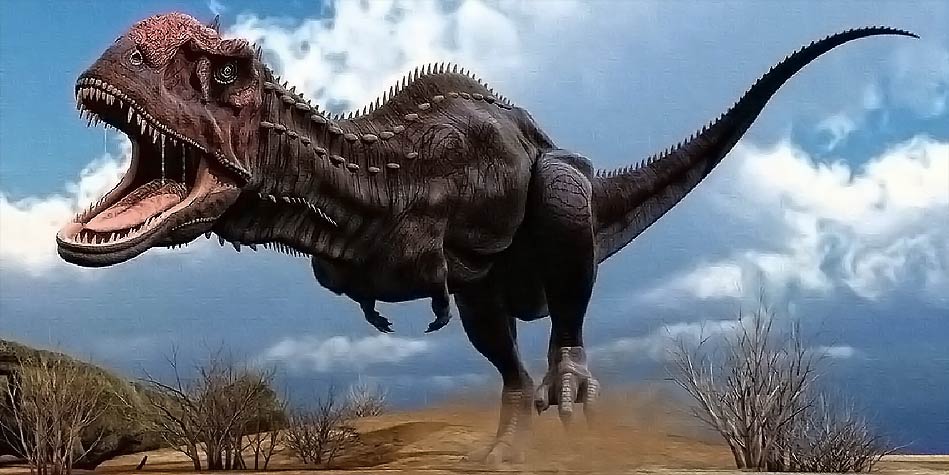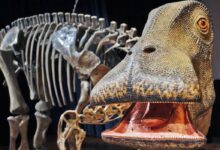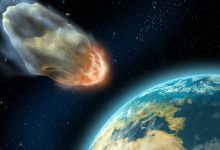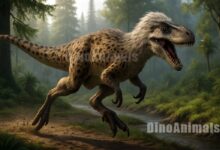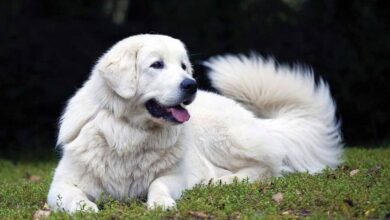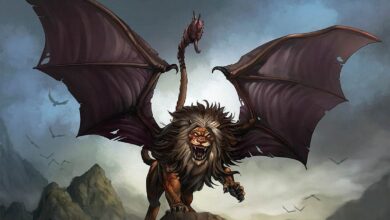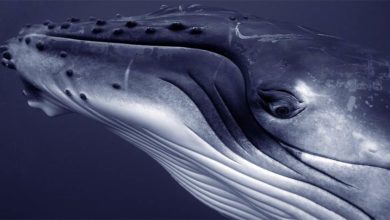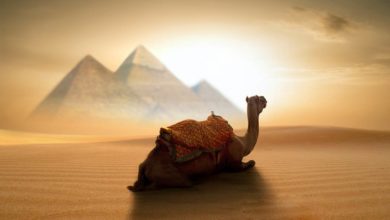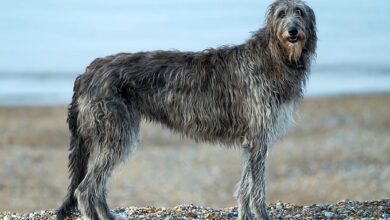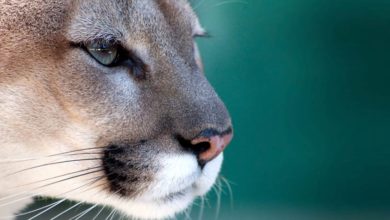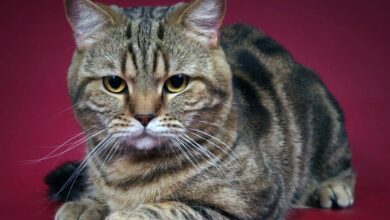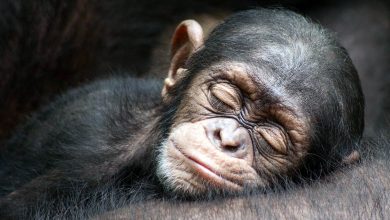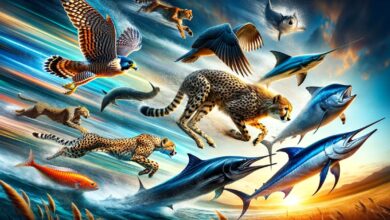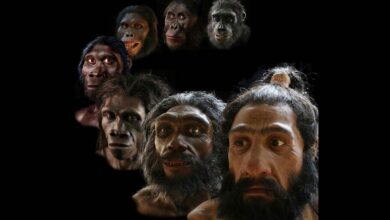Majungasaurus – the king of Madagascar
Majungasaurus
A cannibal and the king of Madagascar
For a human spawned by the Western civilization it is hard to imagine having to eat another human. Cannibalism has been a taboo in our society for many years. However, the animal kingdom shows that this phenomenon occurs until today among our older brothers, and it could have taken place even millions of years ago, when the world has not yet heard about humans at all. The subject of today`s article – Majungasaurus might have been precisely that cannibal.
Classification:
- Kingdom: Animalia
- Clade: Dinosauria
- Order: Saurischia
- Suborder: Theropoda
- Family: †Abelisauridae
- Subfamily: †Majungasaurinae
- Genus: †Majungasaurus
- Species: † Majungasaurus crenatissimus
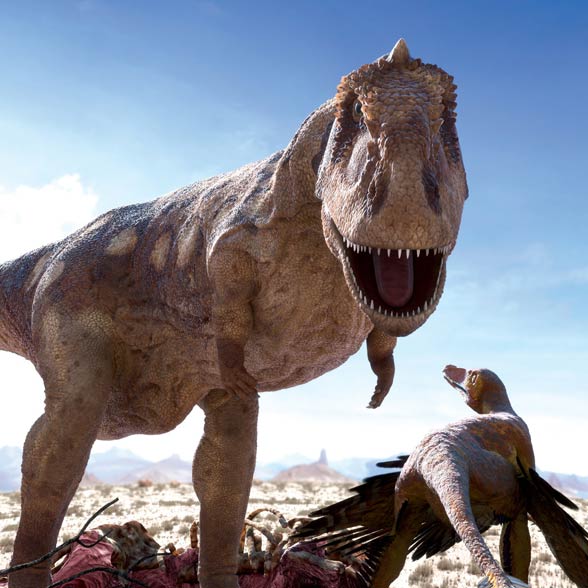
Dating
It is estimated that Majungasaurus lived from 70 to 66 million years ago, in Late Cretaceous. It probably became extinct as a result of Cretaceous-Paleogene extinction event.
Range
Majungasaurus lived on the areas of modern Madagascar island (it was already an island separated from the Indian subcontinent back then). In its time, the climate on Madagascar was semi-arid, intertwined with rain seasons. These theropods inhabited mostly floodplains and sandy river tributary areas.
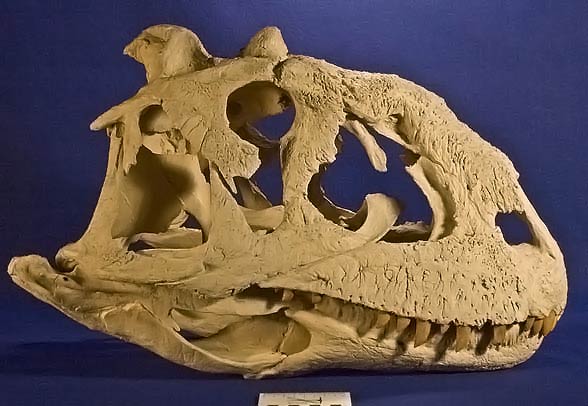
Discovery
Majungasaurus was first described by a French paleontologist Charles Jean Julien Depéret. The fossils found on north-west Madagascar in 1896 included: two teeth, a claw and several vertebrae. The remains were unearthed near the Betsiboka River. Today these fossils are located in the Université Lyon 1., however they were misinterpreted for a long time.
During the next 100 years many fragments of this theropod`s remains were found. Excavations were carried out in north-west Mahajanga province. They were organized by French collectors, yet many found bones were passed to the Paris Natural History Museum.
A true breakthrough took place in 1996, when a perfectly preserved theropod`s skull was found. There were comb-like horns at the top of the skull. This discovery caused the dinosaur to be reclassified as an Abelisaur rather than Pachycephalosaurus.
Other excavations on Madagascar allowed to discover many other skulls, but not as well preserved. Moreover, dozens of partially preserved immature and adult skeletons were found. These bones allowed to reconstruct a full skeleton (until then no front limb bones, pelvis and tail were found). The excavations ended in 2007.
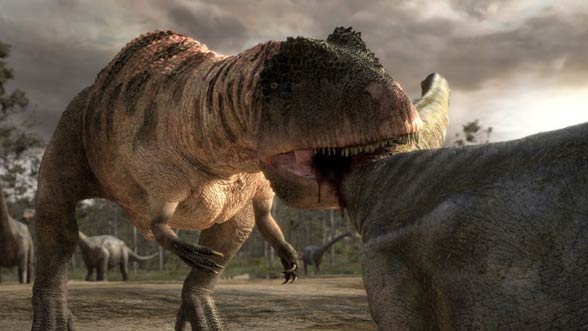
Characteristics
Appearance
At the top of the skull, there were thick nasal bones, a horn and ridges. Similar structures may be observed in e.g. Carnotaurus. Supposedly, they could have a vital role during fights, yet these are only theories unsupported by hard evidence. However, the weak structure of these bones seems to rule out their usage in fight. Presumably, the cranial horn played an important part during mating season – however it is hard to establish whether it was an element of sexual dimorphism. There is no evidence for male-only horns, but there were differences in horn structures in found remains.
In terms of the rest of the body, it was a typical theropod. It walked on two strong legs, yet there is no certainty how the front limbs could have looked like. They surely were much shorter than the rear limbs. It had more teeth in the upper and lower jaw than other abelisaurids.
Majungasaurus front limbs are often presented as only vestigial.
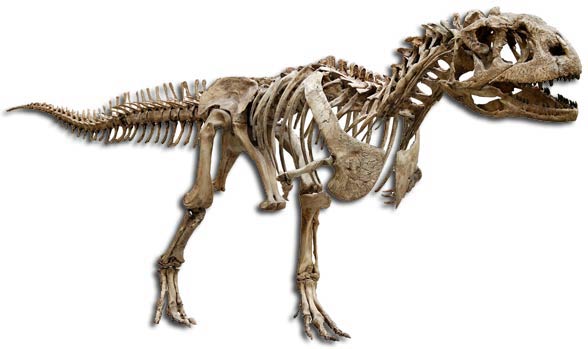
Diet
Most theropods have long and narrow snouts, yet abelisaurids (including Majungasaurus) had shorter, wider and taller snouts. Supposedly, in terms of acquiring food it was similar to modern cats. This means that Majungasaurus could have snatched the prey and hold it down until the victim surrenders. Such a hunting strategy is confirmed not only by the snout shape, but also by the neck, reinforced by hardy vertebrae and tendons.
The upper jaw teeth were more durable than the rest. This prevented them from being pulled out during hunting attacks.
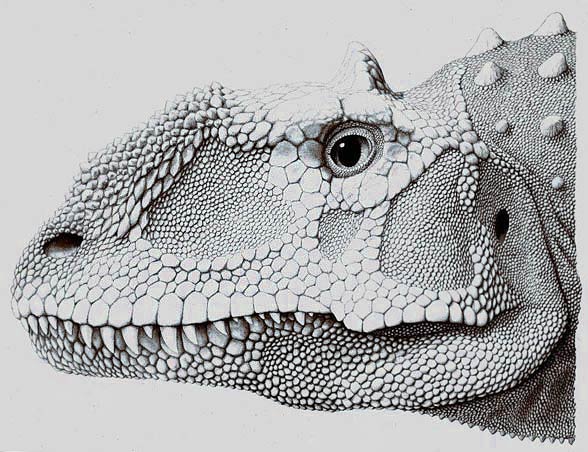
Cannibalistic dinosaur
Majungasaurus could have hunted for Sauropods, but based on 2007 study it was established that it also ate other Majungasaurus. The evidence for such state of matters are the bone teeth prints, which are almost identical to those discovered on Sauropod bones that were victims of the Majungasaurus. The same are teeth patterns, their size and interdental spaces. Many points so that Majungasaurus ate representatives of its species.
It is unclear whether it actively hunted for them, or only ate their carcasses. A hint may be concluded from observation of Komodo dragons, which sometimes kill each other fighting over carrion.
After killing the rival, lizards eat the defeated relative. It is possible that Majungasaurus and/or perhaps other theropods behaved in a similar way.

Detailed characteristics / size
Majungasaurus
- Body length : 6-7 m (20-23 ft), but some remains suggest that they could reach over 8 meters (26 ft) of length; T. Holtz suggests they could have been over 9 m (29.5 ft) long
- Estimated weight: 1,100 kg (2,425 lb), but larger specimen could weigh as much as a Carnotaurus, about 1,500 kg (3,306 lb)
- Skull: 60-70 cm (23.6-27.5 in) long
- Dating: 70.6 – 65.5 million years ago, Late Cretaceous (Maastrichtian)
- Range: Madagascar
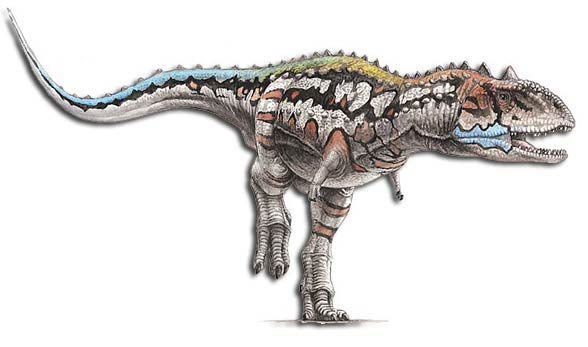
Majungasaurus – interesting facts
- The genus name is a combination of the word mahajanga (province were the dinosaur was first discovered) and sauros – ‘lizard’.
- At first Majungasaurus was called Majungatholus, but the name was changed to the older from
- Majungasaurus is known from several well preserved skulls and many fossilized bone fragments. This is the reason for its being one of the best known theropods of the southern hemisphere. It is worth mentioning that these include both adult and immature bones.
- Majungasaurus is to this day the only confirmed case of cannibalistic theropod. However, it is possible that other species were cannibalistic as well.
- Majungasaurus brain was relatively small compared to the body weight.
- Majungasaurus was the main subject of the fifth episode of a mini-series called When Dinosaurs Ruled hosted by Jeff Goldblum.
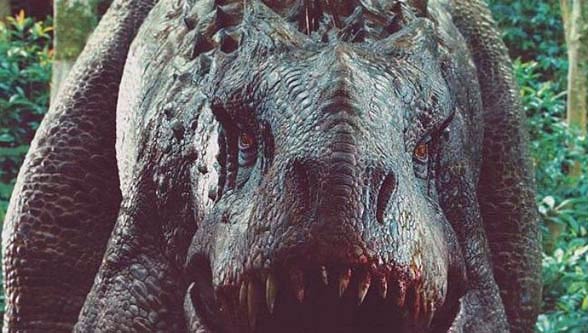
Images credits: Jurassic World, unknown authors
Recommended
- Dinosaurs
- Predatory dinosaurs
- Animals & dinosaurs records
- The fastest animals – Top 100
- The fastest birds – Top 10
- The heaviest dinosaurs – Top 10
- The longest dinosaurs. Sauropods Top 10
- The longest predatory dinosaurs. Theropods Top 10
- The longest and largest ornithopods
- The longest and largest ceratopsians

